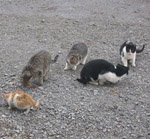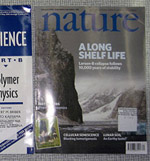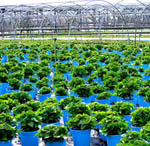Evaluating coastal feeding habitat for marine birds
 Birds,
Birds,  Marine,
Marine,  Planning,
Planning,  Technology-GIS
Technology-GIS  European shag at nest with well-grown chicks, Farne Islands, UK.Scientists from the UK have tested a model for predicting the quality of feeding habitat for seabirds over a geographic area. This model is useful because it can help conservation planners target preservation efforts on the highest quality feeding habitat.
European shag at nest with well-grown chicks, Farne Islands, UK.Scientists from the UK have tested a model for predicting the quality of feeding habitat for seabirds over a geographic area. This model is useful because it can help conservation planners target preservation efforts on the highest quality feeding habitat.
The model can also help us foresee how feeding habitat quality may change in the future as a result of regional environmental disturbances such as oil spills or an increase in fishing intensity.
The model involves incorporating a number of environmental variables into GIS to generate maps that show how habitat quality varies spatially and temporally (e.g during different stages of the breeding cycle). Sarah Wanless and fellow researchers tested the model on the European shag (Phalacrocorax aristotelis) off the coast of Scotland though it really is applicable to any seabird in any geographic setting so long as sufficient data exists on its feeding habits. They published their methodology and results in the Journal of Coastal Conservation.
The model evaluates habitat quality for an area based on the time expenditure needed by the shag to satisfy metabolic requirements. Shags primarily feed on lesser sand eels (Ammodytes tobianus), which are more likely found in sandy sediments. The researchers incorporated sea depth, seabed substrate, and distance to colony as spatial variables that affect habitat quality. They ran the model under different stages of the breeding cycle when metabolic requirements would be different.
The researchers demonstrate how the output from the model can be used be to identify high quality areas for habitat protections. They also show how the model could be useful to examine how oil spills and intensification of fishing could alter the quality gradient of shag feeding habitat over the geographic area. The authors write,
"Surveys ‘at sea’ of fish and seabirds are difficult, expensive and often confined to small areas. Our contribution illustrates how crucial ecological data on feeding behaviour can be integrated with simple but extensive GIS data on the marine environment to predict those areas most likely to be important for supporting shag populations."
--Reviewed by Rob Goldstein
Wanless, S., Bacon, P., Harris, M., & Webb, A. (2002). Evaluating the coastal environment for marine birds Journal of Coastal Conservation, 8 (1) DOI: 10.1652/1400-0350(2002)008[0017:ETCEFM]2.0.CO;2




Reader Comments